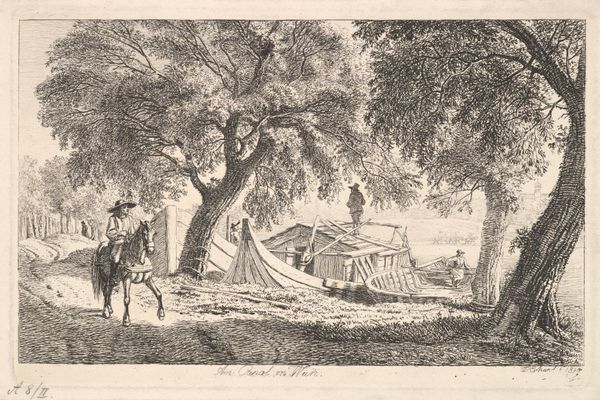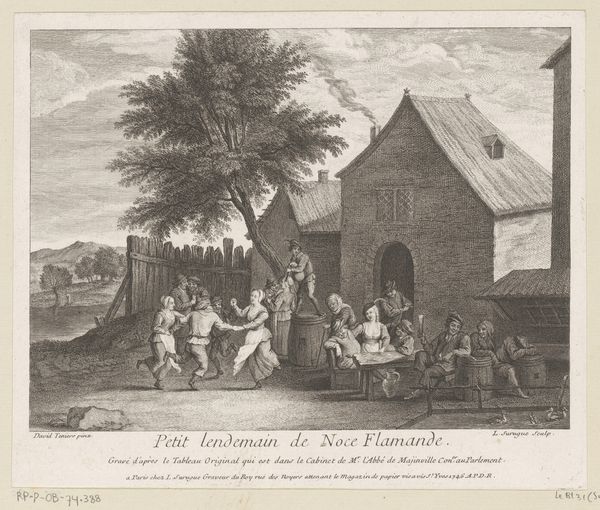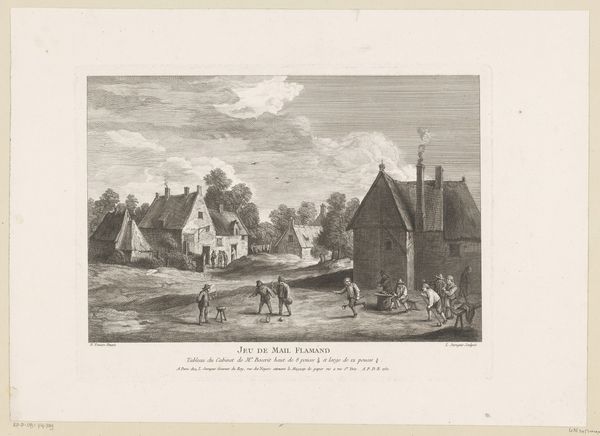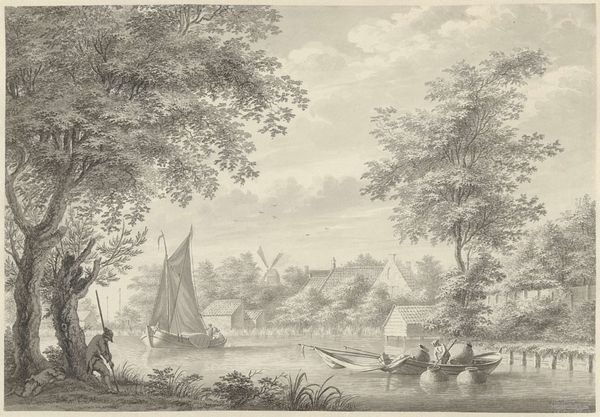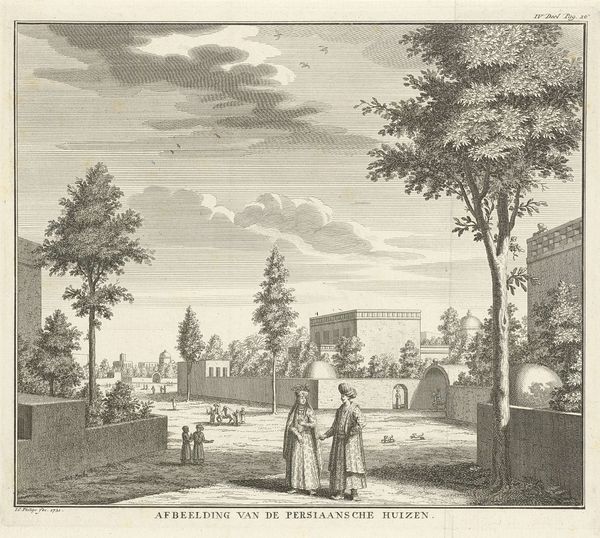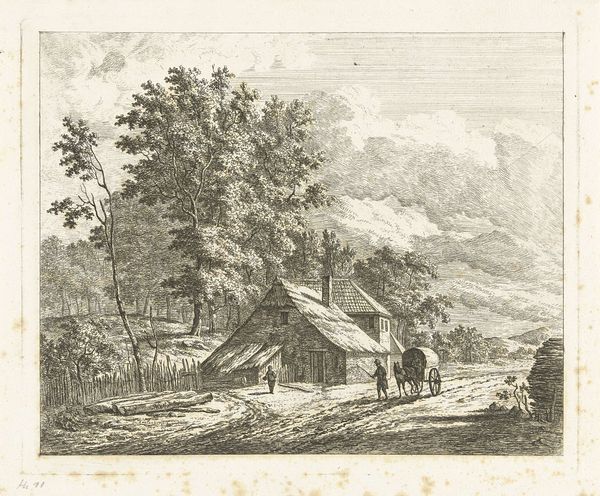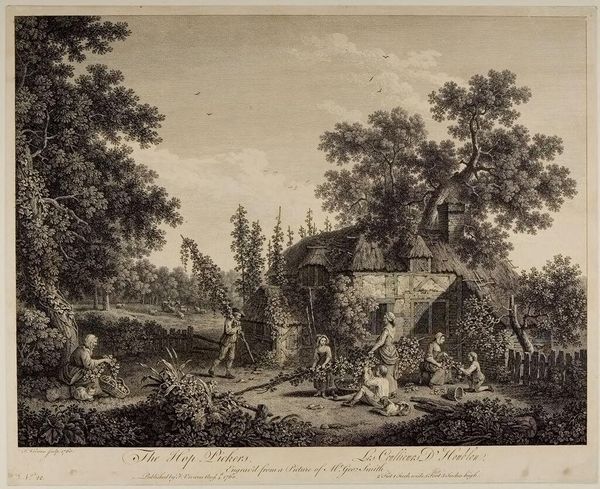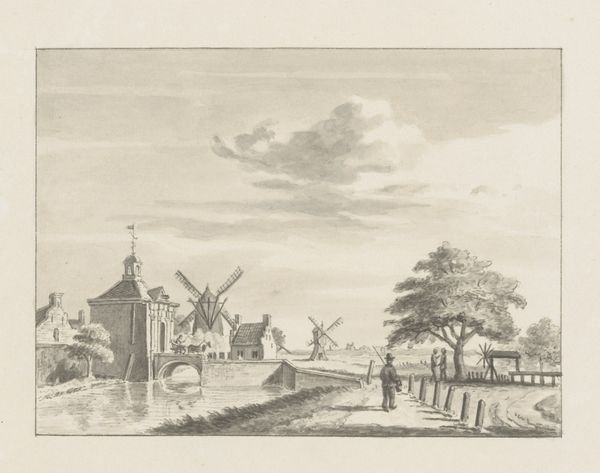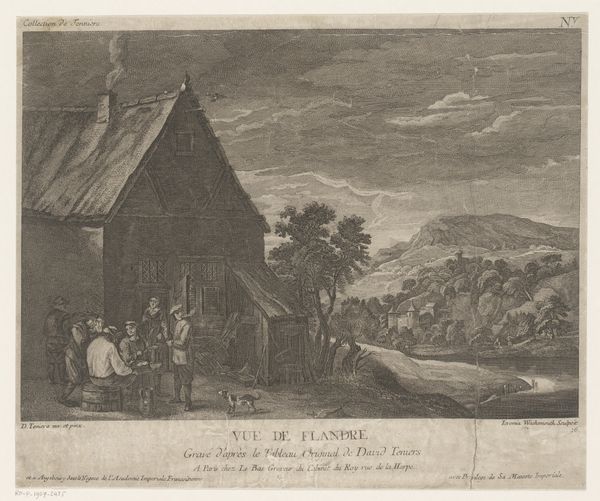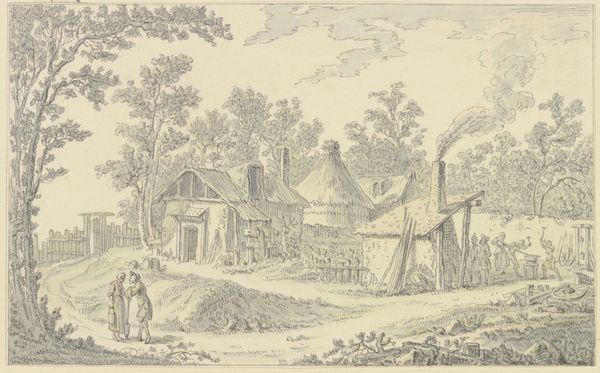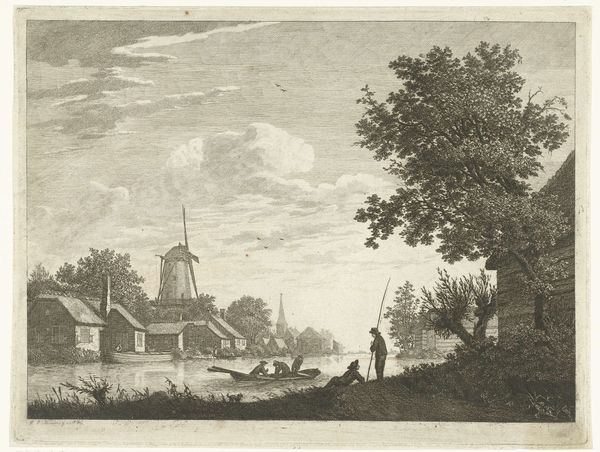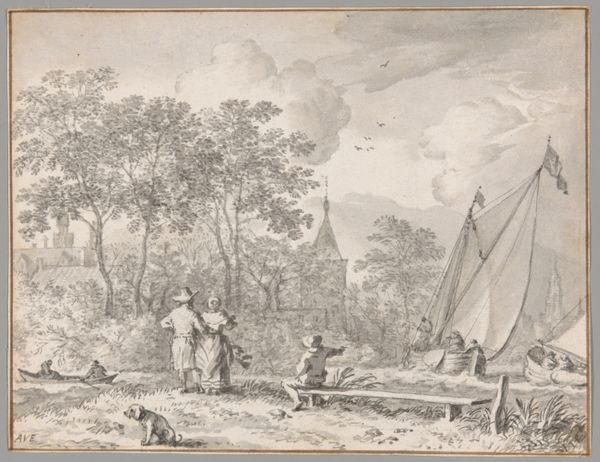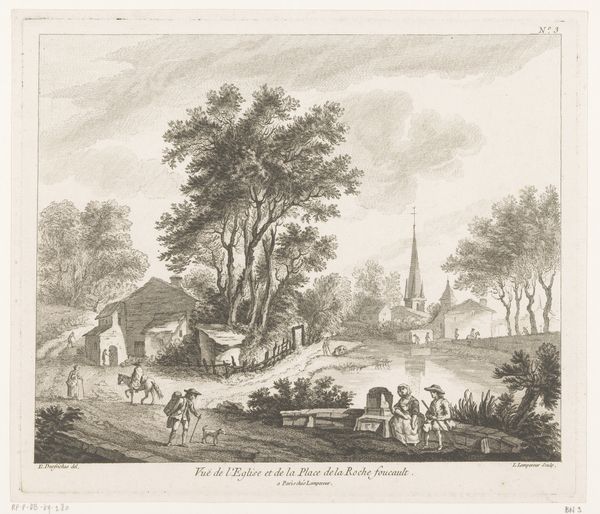
print, etching, engraving
#
baroque
# print
#
etching
#
asian-art
#
landscape
#
genre-painting
#
engraving
Dimensions: height 185 mm, width 208 mm
Copyright: Rijks Museum: Open Domain
Curator: Today, we’re looking at "View of a Temple in Pegu," an etching and engraving created around 1730 by Jan Caspar Philips. It's part of the Rijksmuseum collection. Editor: My first thought? Tranquility. It’s incredibly detailed but radiates a peaceful stillness. The pyramid-like structure has such presence, and the figures give it a real sense of scale. Curator: Yes, Philips really captures the scale. The meticulous lines define not only the grand structure of the temple but also the subtleties of the clothing worn by the people. Notice the detailed patterns etched onto the temple's surface? It’s almost as if the temple is alive, breathing. Editor: Those details! I get a sense of the artist almost trying to understand, piece by piece, what this place *means*. It feels very much like an outsider looking in, documenting, meticulously recording what they see, not just as architecture, but as cultural artifact. I'm curious about his own feelings as he engraved this. Curator: It's interesting you say that because this piece blends genre painting with landscape, making it more than just a rendering of a temple. The inclusion of local people in their traditional clothing puts it into context. Philips offers a narrative here—almost as a visual ethnography of 18th-century Pegu. The engraver makes it all a window into another world. Editor: It almost feels staged in a way—a portrait against a backdrop rather than pure documentary, which is completely understandable. Given that it's a print, the tonality is surprisingly even, and despite all the details, there’s such an appealing balance. And despite its apparent calmness, you have the sense of life continuing beyond what's framed in front of us. Curator: Definitely. It evokes a silent hum. Philips wasn’t just illustrating a place, but creating a scene loaded with the curiosity and cultural understanding prevalent at the time. Editor: It leaves me pondering what’s real versus perceived, and the stories we layer onto places we see but don’t quite know.
Comments
No comments
Be the first to comment and join the conversation on the ultimate creative platform.
